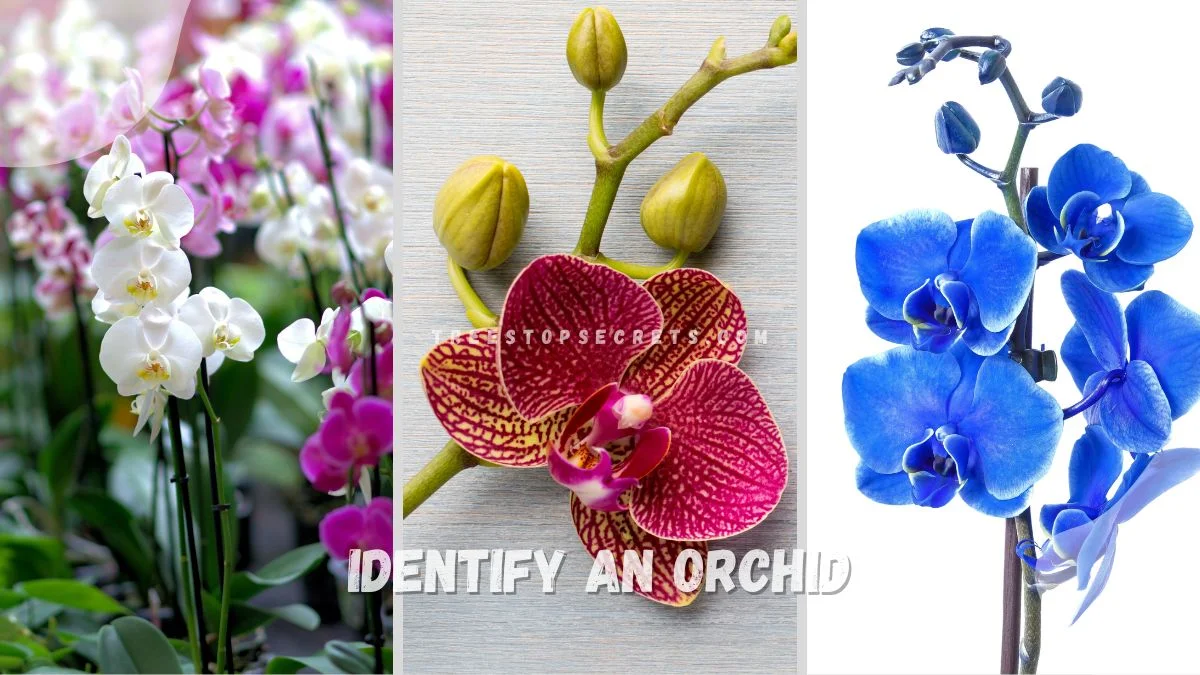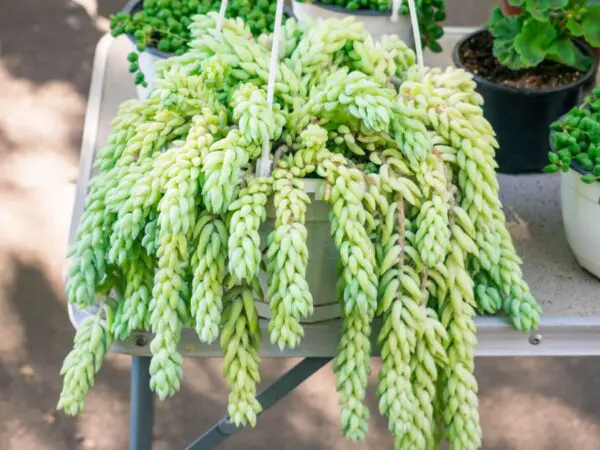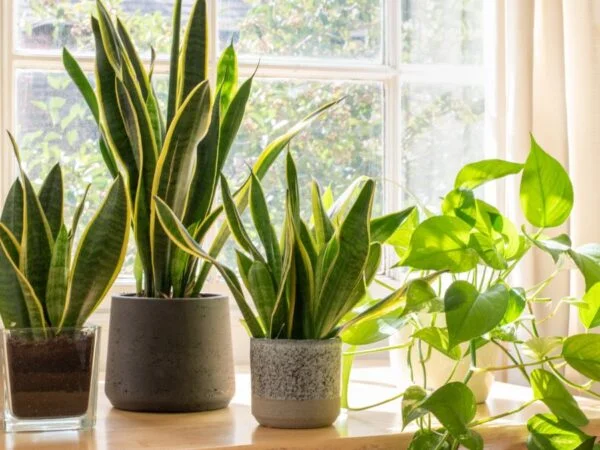If you're looking to identify an orchid, you’re in the right place. With over 25,000 species, orchids are one of the largest and most diverse plant families. We can guide you through key characteristics such as flower structure, leaf shape, and growth habit to help you pinpoint your orchid’s identity. Our tips will empower you to distinguish between popular orchid types like Phalaenopsis, Cattleya, and Dendrobium, ensuring you can confidently recognize and care for these beautiful plants.
Start by examining the flower's structure—orchids typically have three sepals, three petals, and a distinctive lip (labellum) that often differs in color or shape. Check the plant’s leaves; they can be leathery or papery, and their shape and pattern vary by species. Growth habits also offer clues: some orchids grow on trees (epiphytes), others on rocks (lithophytes), and some in soil (terrestrials). Recognizing these traits will help you identify orchids such as the moth-like Phalaenopsis, the flamboyant Cattleya, or the cane-like Dendrobium.
For a deeper understanding of orchid identification and specific care tips tailored to various species, continue exploring our comprehensive guides. Each section covers unique orchid traits, ensuring you become adept at recognizing and nurturing these fascinating plants.
Key Takeaways
- Identifying Orchids: Look for unique characteristics like leaf shape, color patterns, and flower structure to differentiate between orchid species.
- Potting Mixes: Choose a well-draining mix like bark or sphagnum moss to ensure proper aeration and prevent root rot in your orchids.
- Care Tips: Maintain consistent watering schedules, provide adequate light levels, and monitor humidity to keep your orchids healthy and thriving.
- Growing at Home: Create a suitable environment by mimicking the natural habitat of the orchid species you are cultivating to encourage optimal growth.
- Advanced Care Guides: Explore specialized care techniques such as temperature adjustments, fertilization schedules, and pest control methods for more challenging orchid varieties.
- Wild Orchids: Understand the unique needs of wild orchids and consider conservation efforts to protect these delicate species.
Identifying Orchids
Leaf Views
When identifying orchids, examine the color and texture of their leaves as indicators of health. Look for any discoloration, spots, or wilting which may signal issues. Note the size and shape of the leaves to aid in species identification.
Without Flowers
For orchids without flowers, focus on the leaf structure and growth patterns. Take note of unique features such as pseudobulbs or distinctive growth habits. Pay attention to variations in leaf colors and their arrangements for distinguishing characteristics.
Flower Spikes
When examining orchids with flower spikes, observe the size, shape, and color of the spikes for identification purposes. Take note of the number of flowers per spike and how they are arranged. Look for any distinct patterns or markings on the flower spikes that can help in classification.
Types and Subtypes
Brassavola to Cycnoches
Brassavola orchids are known for their fragrant white flowers and long, slender leaves, thriving in bright light. Catasetum orchids, on the other hand, have unique male and female flowers, requiring a dormant period for blooming. Cycnoches orchids boast a distinct swan-like flower shape and prefer warm temperatures with ample humidity.
- Brassavola: Fragrant white flowers, bright light, slender leaves.
- Catasetum: Unique male and female flowers, dormant period for blooming.
- Cycnoches: Swan-like flower shape, warm temperatures, high humidity.
Cymbidium to Epidendrum
Cymbidium orchids exhibit large sprays of blooms in various colors and patterns, needing cool temperatures to bloom profusely. Epidendrum orchids are diverse, with some species producing clusters of small flowers while others have large, showy blooms. Providing bright indirect light and consistent watering is crucial for both types.
- Cymbidium: Large sprays of blooms, cool temperatures for profuse blooming.
- Epidendrum: Diverse species, clusters of small or showy blooms, bright indirect light.
Encyclia to Lycaste
Encyclia orchids feature intriguingly shaped flowers in vibrant colors like pink, purple, and yellow, thriving in intermediate temperatures. Lycaste orchids are characterized by their waxy flowers in shades of white, green, or brown, requiring high humidity levels and good air circulation for optimal growth.
- Encyclia: Intriguing flower shapes, vibrant colors, intermediate temperatures.
- Lycaste: Waxy flowers, white, green or brown shades, high humidity, good air circulation.
Oncidium to Vanda
Oncidium orchids are popular for their sprays of small flowers in various colors like yellow and red, flourishing in bright light conditions. Vanda orchids are known for their large, colorful blooms and aerial root system that requires regular misting to maintain humidity levels. Both types need well-draining pots to prevent waterlogged roots.
- Oncidium: Sprays of small flowers, various colors, bright light.
- Vanda: Large colorful blooms, aerial root system, regular misting for humidity maintenance.
Potting Mixes
General Guide
Orchids are a diverse group of plants, with over 25,000 species ranging from tropical to subarctic climates. They require specific care depending on their type. Understanding these differences is crucial for successful cultivation. The basic care practices include proper watering, adequate light exposure, and appropriate temperature levels. These factors play a significant role in orchid health and blooming.
Specific Mixes
Different orchid species thrive in various potting mixes. For instance, tight pots are ideal for epiphytic orchids like Phalaenopsis, promoting air circulation around the roots. Well-draining media, such as bark chips or sphagnum moss, are essential for preventing root rot. Creating custom potting mixes allows growers to tailor the medium's composition to meet the specific needs of their orchids.
- Pros:
- Customizable to suit specific orchid requirements.
- Promotes healthy root growth and prevents waterlogging.
- Cons:
- Requires regular monitoring and adjustment based on orchid response.
- Initial setup may involve trial and error to find the perfect mix.
Miniature Orchids
Miniature orchids are prized for their small size and delicate blooms, making them popular among collectors. Despite their diminutive stature, these orchids have unique care needs. They often require more frequent watering due to their smaller root systems and faster drying potting mixes. Displaying miniature orchids creatively can enhance their aesthetic appeal while providing optimal growing conditions.
- Examples of Creative Displays:
- Terrariums with controlled humidity levels.
- Hanging baskets to showcase cascading blooms.
Care Tips
Watering
Proper watering is vital for orchid care to prevent issues like root rot and dehydration. Different orchid species have varying watering needs. Overwatering can lead to root rot, while underwatering causes dehydration.
To determine the right watering frequency, consider factors such as the orchid species, potting medium, and environmental conditions. Orchids typically need to dry out between waterings to prevent root suffocation and fungal growth.
When watering orchids, ensure water drains freely from the pot to avoid waterlogging. Consider using a well-draining potting mix to prevent water accumulation around the roots. Water in the morning to allow excess moisture to evaporate during the day.
Lighting
Adequate light exposure is crucial for orchids as they require light for photosynthesis and blooming. Different orchid species have varying light requirements, ranging from low to high light levels. Insufficient light can result in poor growth and lack of flowering.
Understanding the light preferences of your orchid species is essential for providing optimal growing conditions. Orchids generally thrive in bright, indirect light. Monitor your orchid's response to light exposure and adjust accordingly to ensure healthy growth.
To provide optimal lighting conditions, place orchids near windows with filtered sunlight or use artificial grow lights. Rotate your orchids regularly to ensure even light distribution and prevent uneven growth patterns.
Temperature
Temperature plays a significant role in orchid growth and blooming cycles. Different orchid types have specific temperature preferences, with some requiring cooler temperatures for dormancy or warmer temperatures for flowering. Fluctuating temperatures can stress orchids and inhibit blooming.
Maintaining consistent temperatures within the recommended range is crucial for promoting orchid health. Most orchids thrive in temperatures between 60-80°F (15-27°C) during the day and slightly cooler at night. Sudden temperature drops or spikes can shock orchids, affecting their overall health.
To regulate temperatures effectively, consider placing orchids in areas with stable temperatures and away from drafts or heating vents. Use a thermometer to monitor temperature fluctuations and make adjustments as needed to create a favorable environment for your orchids.
Specific Subtypes Overview
Miniature Varieties
Miniature orchids are known for their compact size and delicate blooms, making them perfect for small spaces. These tiny wonders require careful attention to thrive, including consistent watering and proper light exposure. Embrace the challenge of nurturing these dainty beauties for a rewarding experience.
- Compact size and delicate blooms
- Specific care tips for miniature orchids
Reed Stem Epidendrum
Reed Stem Epidendrum orchids stand out with their tall, cane-like stems and vibrant flowers, adding a touch of elegance to any space. To ensure their well-being, provide these orchids with bright indirect light and a well-draining potting mix. Embrace the unique beauty of Reed Stem Epidendrum orchids in your orchid collection.
- Tall, cane-like stems and colorful flowers
- Ideal growing conditions and care requirements
Intergeneric Orchids
Intergeneric orchids offer a captivating blend of characteristics from different orchid genera, creating stunning hybrids with unique traits. These orchids boast diverse appearances and care needs, requiring a tailored approach to cultivation. Delve into the world of intergeneric orchids to witness nature's creativity at its finest.
- Intergeneric hybrids combine traits from different genera
- Diverse appearances and care needs of intergeneric orchids
Wild Orchids
Identifying Naturally
Identifying wild orchids involves learning to recognize them in their natural environment. By understanding the environmental cues and indicators, one can successfully identify various orchid species. The process of identifying orchids in the wild presents both challenges and rewards for enthusiasts and researchers.
- Look for specific characteristics such as leaf shape, size, and color to help identify orchids.
- Pay attention to the habitat where the orchids are found, as different species thrive in varying environments.
- Orchids often have distinct flower shapes and colors that aid in their identification in the wild.
Common Species
When it comes to common orchids, there are several popular species with unique characteristics. Understanding the growth habits, flower colors, and care requirements of these orchids is essential for enthusiasts.
- Popular orchid plants like the Cymbidium orchid are known for their vibrant flower colors and long-lasting blooms.
- Terrestrial orchids, such as the Butterfly orchid, are commonly found in many regions due to their adaptability.
- Monopodial orchids are another common type known for their upright growth habit and elegant appearance.
Growing at Home
Easy-to-Grow Dendrobium
Dendrobium orchids are popular for their ease of growth and beautiful blooms. Varieties like Dendrobium nobile and Dendrobium phalaenopsis are ideal choices for beginners. These orchids thrive in bright, indirect light and require well-draining potting mix.
- Pros:
- Resilient to fluctuations in temperature
- Varied colors and sizes available
To care for Dendrobium orchids, ensure they receive adequate humidity and consistent watering. Allow the roots to dry slightly between waterings to prevent root rot. Fertilize these orchids with a balanced fertilizer during the growing season to support healthy new growth.
Tips for Oncidium Growth
Oncidium orchids, known for their vibrant colors and unique shapes, require specific care to thrive. To promote healthy growth, provide these orchids with bright, indirect light and maintain temperatures between 60-80°F. Water Oncidiums thoroughly when the potting mix is dry to the touch.
- Watering:
- Avoid overwatering to prevent root rot
- Use a well-draining potting mix
- Lighting:
- Indirect sunlight for at least 6 hours daily
For robust flowering, Oncidium orchids benefit from a slight drop in temperature at night. Fertilize these orchids with a balanced fertilizer every 2-4 weeks during the growing season to support healthy growth.
Growing Cattleya
Cattleya orchids are prized for their large, showy flowers and delightful fragrance. Understanding their pseudobulb growth habit is essential for successful cultivation. These orchids require bright, indirect light and a well-aerated potting mix.
- Cons:
- Require higher humidity levels
- Larger space requirement due to pseudobulbs
To nurture vibrant Cattleya orchids, maintain consistent humidity levels around 50-70% and water them when the top layer of the potting mix feels dry. Fertilize these orchids with a high-phosphorus fertilizer during the growing season to encourage blooming.
Advanced Care Guides
Phalaenopsis Care
Phalaenopsis orchids, commonly known as moth orchids, require specific care practices for optimal growth. To ensure their well-being, water Phalaenopsis orchids when the top inch of the potting mix feels dry. Place them in bright, indirect light to thrive and maintain a temperature range of 65-85°F.
Support long-lasting blooms in Phalaenopsis orchids by fertilizing them regularly with a balanced orchid fertilizer. Avoid overwatering, as it can lead to root rot. Repot Phalaenopsis orchids every 1-2 years to refresh the potting mix and provide ample space for root growth.
Vanda Care Tips
Vanda orchids have unique care requirements that differ from other orchid varieties. These orchids thrive in warm temperatures between 70-95°F and require high humidity levels. Water Vanda orchids early in the day to allow their roots to dry before nightfall.
Provide bright, indirect light for Vanda orchids to flourish and promote vibrant blooms. Ensure proper air circulation around the plants to prevent fungal diseases. To support healthy root growth, consider using a well-draining potting mix specifically designed for orchids.
Final Remarks
You now have a solid grasp on identifying various orchid types, potting mixes, care tips, and even insights into wild orchids. With this knowledge, you're equipped to grow and nurture these delicate beauties successfully at home. Remember to refer back to the advanced care guides for any specific questions or concerns that may arise along the way.
As you embark on your orchid-growing journey, don't hesitate to experiment and tailor your care routines to suit the unique needs of your plants. Observing and adapting to how your orchids respond will be key to fostering their growth and blooming. So, roll up your sleeves, get your hands dirty, and enjoy the rewarding experience of cultivating these stunning flowers in your own space.
Frequently Asked Questions
How can I identify different types of orchids?
To identify different types of orchids, look at characteristics like the size and shape of the blooms, leaf structure, and growth habits. You can also use online orchid identification tools or consult with a local orchid expert for accurate identification.
What are the best potting mixes for orchids?
Orchids thrive in well-draining potting mixes such as bark mix, sphagnum moss, or perlite. These mixes provide good aeration to the roots and prevent waterlogging, promoting healthy orchid growth.
How should I care for my orchid plant?
Provide your orchid with indirect sunlight, consistent watering schedule (allowing the roots to dry between waterings), proper humidity levels, and occasional fertilization. Regularly inspect the plant for pests or diseases to maintain its health.
Can I grow wild orchids at home?
Growing wild orchids at home may require specific conditions that mimic their natural habitat. It's recommended to research the particular species of wild orchid you want to grow and ensure you can provide the necessary environment and care requirements.
Where can I find advanced care guides for orchids?
For advanced care guides on orchids, consider consulting reputable orchid societies, botanical gardens, or specialized orchid nurseries. These sources often provide detailed information on advanced care techniques such as propagation methods, pest management, and specialized growing conditions.
Image Source: Paid image from CANVA





